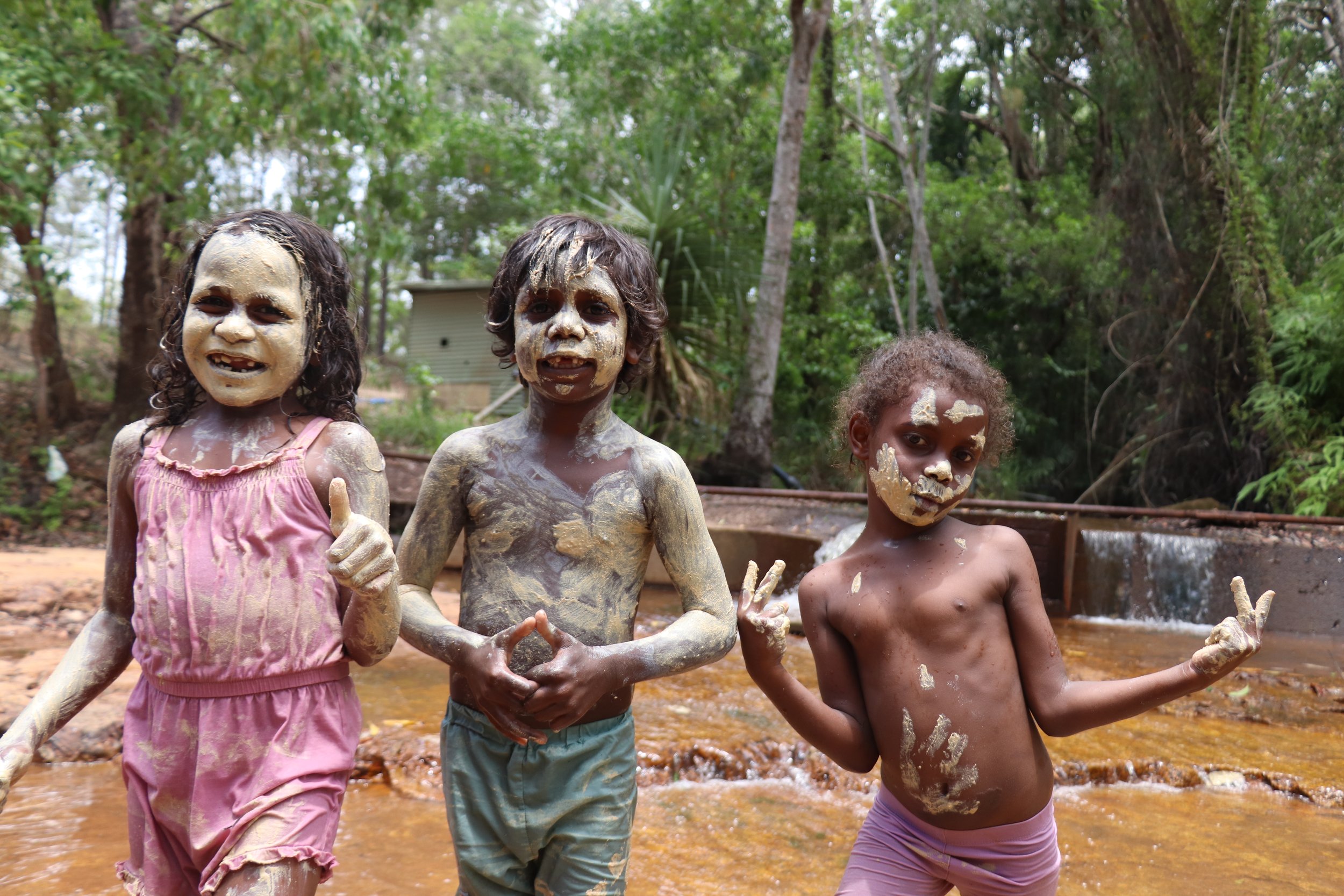
Tiwi Culture
TIWI IDENTITY
The Tiwi islands consist of Bathurst Island and Melville Island. These islands are then comprised of 8 "countries". One inherits country from their father – it is patrilineal.
TIWI DREAMING
The dreaming or totem of a Tiwi is inherited from their father. A Tiwi may not kill or eat their dreaming – it has a significant relationship with them that must be observed and respected. Each dreaming has its associated dance, that is used to identify Tiwi at ceremonies. Some of the totems are: Crocodile, Buffalo, Horse, Turtle, Shark & Jungle Fowl.
SKIN GROUP
The skin group, or "yiminga" of a Tiwi is matrilineal; it is inherited from the mother and determines the marriage line. The word "yiminga", means skin-group, totem, life, spirit, breath and pulse.
There are four skin groups, namely;
"Wantarringuwi" ( sun),
"Miyartiwi" (pandanus),
"Marntimapila" (stone),
"Takaringuwi" (mullet),
Each of thesehas many sub groups.
The skin-group into which Tiwi is born determines who they may, and may not marry. For example, a person in the Wantarringuwi group can marry someone from the Miyartiwi or Takaringuwi groups, but never someone from the Marntimapila group, or from their own group, as shown below:
Today, when young Tiwi rather than their parents, choose their partner, they do not choose randomly, but rather from within the permitted skin groups. When brothers and sisters reach puberty they are not allowed to be alone together, or even to sit together without a chaperone being present; these avoidance rules apply at school, when travelling and even in group-photographs.
TIWI CEREMONIES
Ceremonies play an important role in Tiwi culture. Traditionally each ceremony had its own form, which could vary depending upon the circumstances, and these were transmitted orally. Current ceremonies reflect these traditions, while taking account of modern day circumstances. There are three main ceremonial events performed: • the Kulama (yam) ceremony, • the funeral ceremony (iliana) - including the smoking and healing ceremony • the mortuary or Pukamani ceremony The Kulama ceremony occurs towards the end of the wet season. It is a celebration of life and involves three days and nights of ritual body paintings, singing and dancing complete with the eating of yams according to a ritual custom. Concentric circles often appear as the main element of contemporary Tiwi patterns, representing the Kulama circle or ceremonial dancing ground. The Pukamani ceremony is the Tiwi people's burial ceremony and includes singing, dancing and the making of special carved poles called tutini as well as tungas and arm bands. These large poles are made from the trunk of the ironwood tree and are carved and decorated to celebrate the dead person's life and spiritual journey.
PUKAMANI - MORTUARY CEREMONY
Performance of this ceremony ensures that the spirit of the dead person goes from the living world into the spirit world. The Pukamani is a public ceremony and provides a forum for artistic expression through song, dance, sculpture and body painting. The ceremony occurs months after the deceased has been buried. The Tiwi believe that the dead person's existence in the living world is not finished until the completion of the ceremony. The final Pukamani is the climax of a series of ceremonies that traditionally continued for many months after the burial of the dead. There is usually one iliana (funeral ceremony) at the time of death and then many months later the final Pukamani. The ceremony culminates in the erection of monumental carved and decorated Pukamani poles which take many months to prepare and are impressive gifts to placate the spirit of the dead. These poles are placed around the burial site during the ceremony. They symbolise the status and prestige of the deceased. Participants in the ceremony are painted with natural ochres in many different designs, transforming the dancers and providing protection against recognition by the spirit of the deceased. Those participants closely related to the deceased wear decorated armbands (pamajini) during the performance. Pamajini are woven from the leaves of the pandanus or screw palm and are decorated with natural ochres and the feathers of the white cockatoo. The white cockatoo's association with the Pukamani ceremony extends beyond the use of its feathers for headbands and armbands. It is believed to keep a sentinel eye on wayward spirits lost on route to the island of the dead. During all ceremonies a series of dances (yoi) are performed; some are totemic and some serve to act out the narrative of newly composed songs. Aside from these creative and illustrative performances there are those that certain kin - such as the mother, father, sibling and widow - must dance. When all is concluded and the last wailing notes of the amburu (death song) have died away, the grave is deserted and the burial poles allowed to decay.
Video: Welcome to the Tiwi Islands, courtesy of Tiwi Land Council
Video: Tiwi Traditional Dance, courtesy of Tiwi Land Council
Video: Tiwi culture and the female crocodile, courtesy of National Museum of Australia